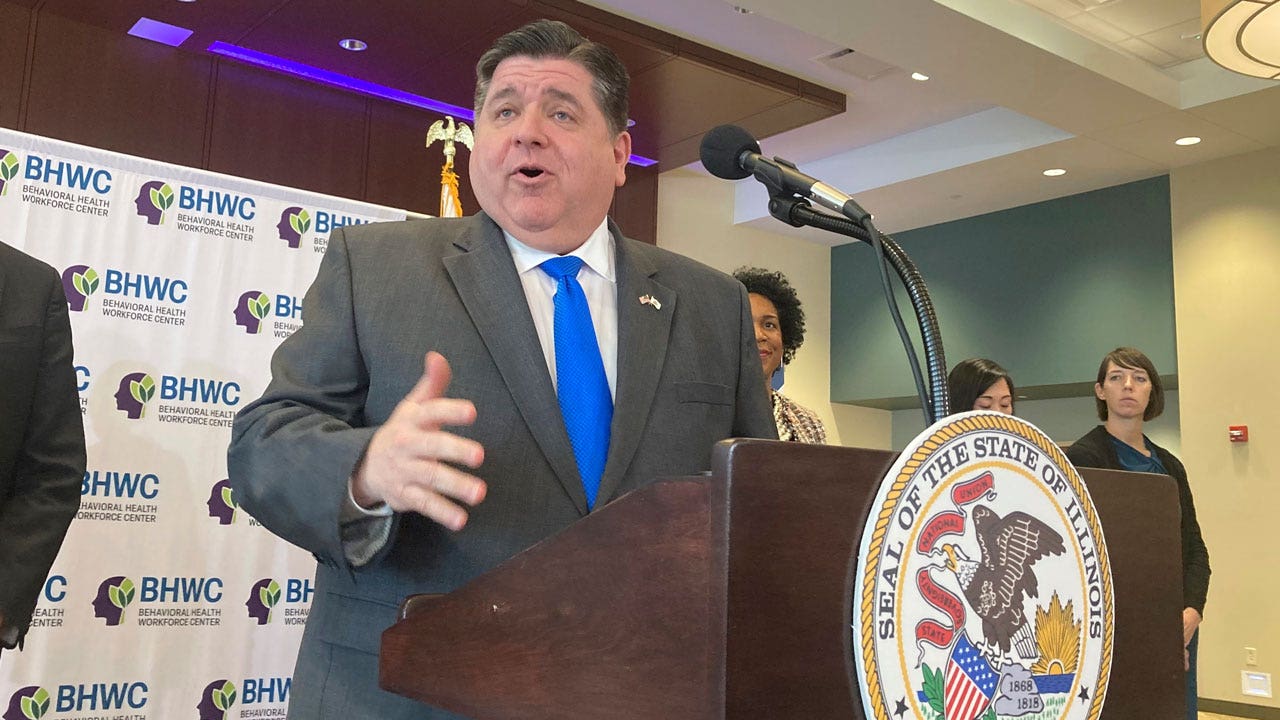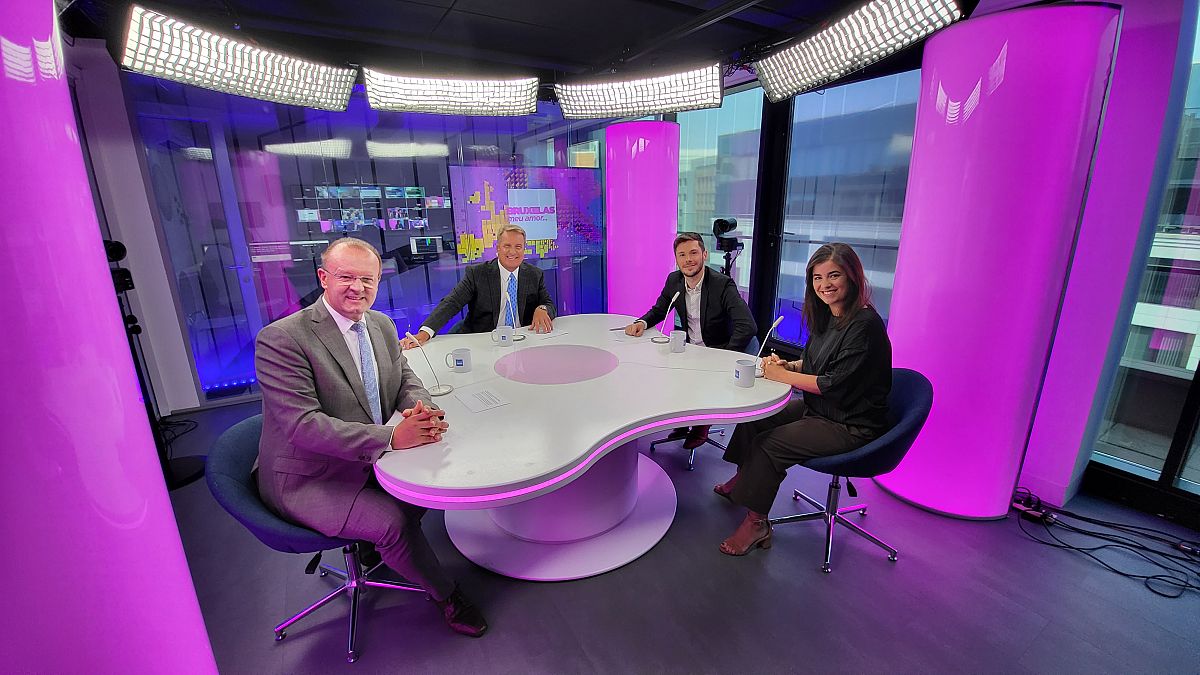For the better part of a generation, low-income and minority US communities have struggled to gain access to affordable broadband. It’s not an accident: numerous studies indicate that major internet service providers, or ISPs — despite billions in taxpayer subsidies — have consistently avoided low-income, minority, and tribal neighborhoods when it comes to affordable fiber upgrades.
Technology
The battle to stop broadband discrimination has only just begun
/cdn.vox-cdn.com/uploads/chorus_asset/file/25125214/236836_Infrastructure_RURAL_EV_CHARGHING_Sisi_Kim_1_.jpg)
It’s something federal policymakers historically haven’t done much about — until now. The 2021 infrastructure bill set aside $42.5 billion for broadband. It also tasked the FCC with crafting new rules taking aim at “digital discrimination.” On November 15th, the agency obliged, passing rules banning ISPs from broadband discrimination based on income, race, and religion.
“These rules are strong,” FCC boss Jessica Rosenworcel said in a statement. “I am grateful to so many in the civil rights community who have helped us give it meaning and the companies that worked with us to improve our process.”
But while activists are thrilled the government has formally acknowledged decades of inequity, they say the FCC went out of its way to avoid criticizing ISPs that have historically discriminated. They also worry that, at an agency with a shaky track record on consumer protection, the rules may not be consistently enforced.
A problem generations in the making
US broadband has long suffered from a lack of regional competition. Most Americans live under either an internet monopoly or a duopoly, resulting in patchy coverage, slow speeds, terrible customer service, and some of the highest prices for broadband in the developed world.
The problem is particularly pronounced in low-income, minority, tribal, and other marginalized communities that have long been victims of redlining, or institutionalized discrimination in everything from home loan approval to the delivery of next-generation infrastructure.
In 2017, minority residents of Cleveland and Detroit filed formal complaints with the FCC, noting they were consistently paying AT&T premium prices for sluggish DSL, while neighbors in more affluent, less diverse communities received faster, cheaper service. The petitioners’ broadband was so slow, it hampered the ability of their children to access online homework.
“Broadband has been deployed where good infrastructure exists, and for decades infrastructure investments were determined by racist government policy”
“Redlining, in any form, is often framed as ‘disinvestment in communities of color,’” Paul Goodman, a lawyer at the Center for Accessible Technology, told The Verge. “That’s only half the picture. Redlining is an investment transfer — money that should go to communities of color and low-income communities is instead redirected to wealthier, whiter communities.”
The lack of affordable internet access severs these communities from modern healthcare, education, and employment opportunities. The problem was highlighted during peak covid-19 lockdowns, when low-income families resorted to huddling in the dirt outside fast food restaurants just to attend online class.
“The digital divide is in many ways a side effect of redlining and the ‘urban renewal’ projects of the 1970s, because broadband has been deployed where good infrastructure exists, and for decades infrastructure investments were determined by racist government policy,” Adria Tinnin, director of race equity policy at The Utility Reform Network, told The Verge. “In other words, it’s not that an ISP has an explicitly racist policy, it’s that they are building on top of infrastructure that was determined by racism, thereby reproducing the negative effects.”
Discrimination has long been present in the construction of US highways and the delivery of reliable and affordable electricity. The deployment of next-generation fiber often runs parallel with both, shaped by decisions made decades or generations earlier.
The National Digital Inclusion Alliance (NDIA) has been tracking the problem for years. The organization closely studied broadband deployment gaps in Cleveland and Detroit and found large local ISPs consistently refused to upgrade broadband networks in minority neighborhoods or areas where poverty rates exceed 35 percent.
ISPs like AT&T have repeatedly denied they ever engaged in any form of digital discrimination. In 2021, the company claimed, without evidence, that the NDIA’s findings were based on “antiquated, inaccurate and cherry-picked data.”
While it’s no surprise that publicly traded telecoms are often fixated on ensuring an adequate return on their investment, these companies have been given untold billions in regulatory favors, subsidies, and tax breaks in exchange for the promise of even broadband deployment. While ISPs may deny that they engage in digital discrimination, the data keeps getting clearer.
Poorer customers are getting hit with higher prices for slower speeds
Last year, The Markup studied 800,000 broadband promotions across 38 cities and found that big ISPs not only refuse to upgrade poor and minority neighborhoods but they also charge these customers more money for slower speeds than those in more affluent and less diverse areas. In many locations, the broadband coverage gaps line up perfectly with historic redlining data.
Fixing the problem has proven to be a complicated mess, in part because the government has historically failed to accurately map affordable broadband availability, rein in sector consolidation, or share broadband pricing data. Big ISPs have long fought against improved broadband mapping or public price comparisons for fear it would highlight market failure.
The telecom industry has already threatened to sue the FCC over the new rules and is particularly incensed at the government’s plan to tackle discriminatory broadband pricing. Industry-allied GOP senators wrote the FCC to complain the rules would harm “the practical business choices and profit-related decisions that sustain a vibrant and dynamic free enterprise system.”
But real-world data indicates that US broadband is far from a vibrant and competitive free market. In reality, it’s a collection of powerful regional monopolies and duopolies that often lobby the government into apathy as they charge captive subscribers a premium for patchy, expensive internet access. It’s a problem that’s always worse for marginalized Americans.
A very promising start, but activists say it’s not enough
Simply creating a framework that tethers historical discrimination to modern broadband redlining is a huge step forward, opening the door to meaningful action down the road, said Shayna Englin, director for the LA-based Digital Equity Initiative.
“It could be a lot stronger in a myriad of ways,” Englin said. “But I will say, we are absolutely celebrating where it landed on the definition of discrimination and access. That makes a world of difference and opens up at least, as far as we see, new avenues that are actionable.”
NDIA executive director Angela Siefer shared those sentiments in comments to The Verge, noting that the FCC’s decision to craft rules that cover both “disparate treatment” (inequity caused by active, provable discrimination) and “disparate impact” (inequity in deployment, regardless of intent) will be historically useful moving forward.
Short of executives putting discriminatory intent in an email to staff, intentional discrimination in broadband deployment can be difficult to prove. Including guidelines that cover disparate impact will be helpful to police systemic discrimination, regardless of conscious intent, activists say.
“This is a huge win.”
“The Digital Discrimination draft rules are not all we wanted but we got the most important — the definition of digital discrimination includes disparate impact,” Siefer said. “This was not easy. NDIA spent a ridiculous amount of time on this because it is so important. And we got it. This is a huge win.”
At the same time, many digital equity activists contacted by The Verge expressed concern that the order doesn’t go far enough to penalize existing bad actors and may not be consistently enforced by an agency with a rocky history of standing up to politically powerful telecom giants closely tethered to US domestic surveillance and first-responder systems.
Consumers will soon have a new system to file discrimination complaints with the FCC, which will be forwarded on to the ISP. If the ISP doesn’t address the concerns, the agency says its enforcement bureau will step in to take action and will conduct “self-initiated Commission investigations” when warranted by available data. Past discrimination will see no penalties. And the process will largely rely on these complaints rather than proactive FCC investigations, although the FCC says it will take action if consistent patterns reveal themselves.
“Nothing in these rules would address historical, existing and the ongoing redlining and discrimination against BIPOC and low income communities by large corporate ISPs,” Brandon Forester, a media and telecom reform activist at MediaJustice, told The Verge. “The FCC expressly declined to look at or eliminate existing discrimination.”
Forester noted that the FCC complaint process is cumbersome and not publicly transparent, and consumers stuck on slow, expensive broadband may not even understand they’re being discriminated against. Given the FCC voting majority shifts with the winds of each presidential election, future, consistent action on complaints is also far from certain.
“Even if a complaint rises to the level of the FCC intervening, we still have a secret process that isn’t public, won’t remediate the discrimination, and at best the FCC may quietly fine the ISP,” Forester said. “So there’s very little disincentive for ISPs who are discriminating to change their behavior. Secret fines and settlements, without any real remediation for the discriminatory behavior, simply becomes a cost of business calculation.”
Tackling monopoly power head-on
Activists say that to truly address discrimination in broadband deployment, federal regulators have to more seriously tackle market failure and monopoly power. These entrenched monopolies work tirelessly to undermine competitive alternatives while lobbying the federal government to ensure regulatory oversight is as feckless as possible.
“We have to acknowledge that we have widespread market failure in the market for residential telecommunications, and that market failure has been driven by incumbent providers, who have not only failed to deliver on promises to close the digital divide, but have actively thwarted any federal policy that would help new entrants gain a foothold,” Goodman said.
Goodman noted that the government has a long history of throwing billions of dollars at regional monopolies in exchange for networks that routinely wind up only partially deployed, whether in rural Mississippi, the hills of West Virginia, or the streets of New York City.
“We have to stop giving broadband subsidies to ISPs that have built their profitability off of digital discrimination,” Goodman said. “Those providers have repeatedly made decisions that resulted in disparate access to broadband, and now they are demanding taxpayer funds to solve a problem which ISPs themselves have created.”
“They are demanding taxpayer funds to solve a problem which ISPs themselves have created”
Activists say there’s a path forward. Federal support of open-access fiber networks and community-owned broadband (including by cooperatives and city-owned utilities) can challenge monopoly power, boost competition, and lower the cost of market entry. The end result: faster, cheaper, and more equitable broadband access inherently less prone to discrimination.
But it’s hard to fix a problem you can’t or won’t measure. While there has been progress since Congress passed a 2020 law demanding the FCC do a better job on broadband mapping, both consumer groups and state leaders say it remains very much an active problem. And the agency still refuses to collect and publicly share essential broadband pricing data.
Some of the FCC’s inaction can be blamed on an industry-backed blockade of popular FCC nominees like Gigi Sohn, leaving it without a voting majority for much of President Joe Biden’s first term. But even with the recent confirmation of Anna Gomez, activists remain skeptical that the agency has the political backbone to consistently stand up to industry giants when it truly matters.
Neglected neighborhoods aren’t waiting for the FCC to get its act together. Hundreds of US communities have been building community-owned and -operated broadband networks in a quest for better, faster, and cheaper internet access. That includes Cleveland, which recently launched a plan to deploy citywide fiber and wireless broadband for as little as $18 a month.
Whether the FCC’s digital discrimination protections can begin to truly repair generations of injustice remains unclear. Industry lawsuits could derail rule implementation until long after infrastructure bill subsidies begin to flow, complicated by looming, industry-backed Supreme Court rulings aimed at undermining the independent authority of US regulators.
The next presidential election will matter as well; while the creation of digital discrimination rules was a congressional mandate, Republican FCC leadership — which historically has sided with the telecom industry on most issues of substance — could simply choose not to enforce them.
Still, the federal government’s belated formal acknowledgment of systemic discrimination remains monumental and historic all the same, providing a much stronger foundation for those on the front lines of the fight for equitable and affordable access.
Joshua Edmonds, CEO of equity activism nonprofit DigitalC, is working closely with Cleveland city officials to help build its new network. He told The Verge he was cautiously optimistic about the FCC’s rules and was quick to acknowledge the historic precedent.
“It’s one thing for an activist group to say that, or even a local equity champion, but for the FCC to acknowledge that digital discrimination has persisted, that’s moving in the right direction,” he said, adding that he has been impressed by the agency’s community outreach sessions in cities like Baltimore, Los Angeles, and Topeka.
“But what does it mean to be penalized?” he asked. “Is it a public facing walk of shame? What actually is it? I think this FCC has big ambitions, and I laud them. I think the question that I have is: with big ambitions, do you guys have teeth? And I don’t know if they do or not.”

Technology
SpaceX resumes Falcon 9 launches after the FAA clears it for flight
/cdn.vox-cdn.com/uploads/chorus_asset/file/25597370/2168837148.jpg)
The agency said that while the investigation of the landing incident remains open, flights can continue, “provided all other license requirements are met,” according to CNN. SpaceX had requested a return to flight on Thursday, the same day the FAA initially grounded the rocket, reports Reuters.
Aside from regular Starlink flights, SpaceX is also preparing to launch Polaris Dawn, a private mission to send billionaire Jared Isaacman and three others through the Van Allen radiation belts to perform the first private astronaut spacewalk.
SpaceX is also expected to send two astronauts to the International Space Station on NASA’s Crew-9 mission as soon as September 24th. The US space agency just bumped two astronauts from that mission in order to make room for astronauts Sunita Williams and Barry Wilmore, who NASA plans to bring back to earth in February after their Boeing spacecraft was found to be unfit for a crewed return flight.
Technology
Windows update flaw could be a hidden gateway to zombie vulnerabilities

windo
Researchers have discovered a new way hackers could use to exploit Windows devices. They have found a vulnerability in your PC’s operating system that could let threat actors downgrade it to an older version of Windows.
So, if you’re on Windows 11, they could roll it back to Windows 10, which would expose a bunch of old vulnerabilities they could use to take full control of your system.
Microsoft told CyberGuy it is working on a fix and claims the vulnerability is still just theoretical — the company hasn’t seen anyone try to exploit it yet. I’ll go over the details of this security flaw and share some tips to help you protect your PC.
GET SECURITY ALERTS, EXPERT TIPS — SIGN UP FOR KURT’S NEWSLETTER — THE CYBERGUY REPORT HERE
A person working on a Windows PC. (Kurt “CyberGuy” Knutsson)
How hackers exploit Windows downgrades
Alon Leviev, a researcher at SafeBreach, spotted the security flaw. Leviev says he started digging into downgrade attack methods after noticing that a big hacking campaign last year used malware called the “BlackLotus UEFI bootkit” that worked by downgrading the Windows boot manager to an old, vulnerable version.
Leviev found a way to downgrade Windows — either the whole operating system or just certain parts of it. He then created a proof-of-concept attack using this method to turn off a Windows protection called Virtualization-Based Security (VBS) and target the highly privileged code running in the computer’s core, known as the “kernel.”
WHAT IS ARTIFICIAL INTELLIGENCE (AI)?
Normally, when your PC requests an update, it communicates with a secure Microsoft server that controls the update process. Leviev couldn’t directly alter the server-controlled files, but he found that one key — “PoqexecCmdline” — was not locked, allowing him to manipulate the update process.
Using this control, Leviev was able to downgrade critical Windows components — including drivers, dynamic link libraries and the NT kernel — to older versions with known vulnerabilities. He also found ways to downgrade important security features like the Windows Secure Kernel, Credential Guard, the hypervisor and Virtualization-Based Security (VBS).
To make it clearer, older versions of Windows have unpatched issues that hackers can exploit to steal your data or take control of your PC. These issues get fixed when you update to the latest software version. But if hackers manage to downgrade your PC to an old, vulnerable version, they can easily break into your system.

Windows software running on these laptops. (Kurt “CyberGuy” Knutsson)
BEST POWER STRIPS AND SURGE PROTECTORS 2024
What is Microsoft doing about the issue?
Microsoft has acknowledged the security flaw and is actively working on a fix. In response to an inquiry from CyberGuy, a company spokesperson provided the following statement:
“We appreciate the work of SafeBreach in identifying and responsibly reporting this vulnerability through a coordinated vulnerability disclosure. We are actively developing mitigations to protect against these risks while following an extensive process involving a thorough investigation, update development across all affected versions, and compatibility testing, to ensure maximized customer protection with minimized operational disruption.”
The Redmond, Washington-based company said it is developing a security update that will revoke outdated, unpatched VBS system files to mitigate this threat. Due to the complexity of blocking such a large quantity of files, rigorous testing is required to avoid integration failures or regressions. The company added:
“We are not aware of any attempts to exploit the technique outlined in this report and are continuing to monitor the threat landscape as it evolves.”

HP laptop running Windows. (Kurt “CyberGuy” Knutsson)
WINDOWS FLAW LETS HACKERS SNEAK INTO YOUR PC OVER WI-FI
Learn how to update your Windows software
Microsoft says that hackers haven’t exploited the vulnerability yet, and even if they do, there’s little you can do from your side. Still, as general cybersecurity hygiene, keep your operating system and other software up-to-date.
It is one of the most effective ways to safeguard your devices from known vulnerabilities and security flaws. To update your Windows software and benefit from the latest security patches, follow these simple steps:
For Windows 10 and Windows 11
- Click on the Start menu and select “Settings” (or press the Windows key + I shortcut).
- In the Settings window, click on “Update & Security.”
- Under the “Windows Update” section, click “Check for updates.”
- If updates are available, including the patch for the Wi-Fi driver vulnerability, Windows will download and install them automatically.
- Once the installation is complete, you may be prompted to restart your computer to apply the updates.
For Windows 8.1 and Earlier Versions
- Open the Control Panel and navigate to “System and Security.”
- Under the “Windows Update” section, click “Check for updates.”
- If updates are available, including the patch for the Wi-Fi driver vulnerability, select them and click “Install updates.”
- Follow the on-screen instructions to complete the installation process.
- Restart your computer if prompted to apply the updates.
HOW TO REMOVE YOUR PRIVATE DATA FROM THE INTERNET
Four additional ways to protect your Windows PC
The report says that even if the downgrade flaw is quite undetectable, hackers still need a way to get remote access to your computer. This is where you can stop them. Here are some steps you can take:
1. Install a strong antivirus program: Hackers often gain access to devices by sending infected emails or documents or tricking users into clicking a link that downloads malware. You can avoid this by installing strong antivirus software that will detect any potential threat before it can take over your device or router. Get my picks for the best 2024 antivirus protection winners for your Windows, Mac, Android and iOS devices.
2. Recognize urgent requests as potential scams: Always be wary if someone is urgently requesting you to do something like send money, provide personal information or click on a link — chances are it’s a scam.
3. Use strong and unique passwords: Create strong passwords for your accounts and devices, and avoid using the same password for multiple online accounts. Consider using a password manager to securely store and generate complex passwords. It will help you to create unique and difficult-to-crack passwords that a hacker could never guess. Second, it also keeps track of all your passwords in one place and fills passwords in for you when you’re logging into an account so that you never have to remember them yourself. The fewer passwords you remember, the less likely you will be to reuse them for your accounts. Get more details about my best expert-reviewed Password Managers of 2024 here.
4. Enable two-factor authentication: Enable two-factor authentication whenever possible. This adds an extra layer of security by requiring a second form of verification, such as a code sent to your phone, in addition to your password.
HOW TO REMOVE YOUR PRIVATE DATA FROM THE INTERNET
Kurt’s key takeaways
This latest Windows vulnerability is a major concern, exposing your PC to potential risks by allowing hackers to downgrade your system to an older, less secure version. By exploiting this flaw, attackers could access outdated vulnerabilities and take full control of your machine. While Microsoft is aware of the issue and is working on a fix, the fact that this vulnerability even exists is a stark reminder of how critical it is to stay on top of system updates and security measures. Keep an eye on your system’s security and be cautious as more details emerge.
Do you regularly check for and install updates to avoid security threats like this? Let us know by writing us at Cyberguy.com/Contact
For more of my tech tips and security alerts, subscribe to my free CyberGuy Report Newsletter by heading to Cyberguy.com/Newsletter
Ask Kurt a question or let us know what stories you’d like us to cover.
Follow Kurt on his social channels:
Answers to the most-asked CyberGuy questions:
New from Kurt:
Copyright 2024 CyberGuy.com. All rights reserved.
Technology
The best wireless earbuds to buy right now
/cdn.vox-cdn.com/uploads/chorus_asset/file/25596029/247231_Buying_Guide_Earbuds_CVirginia.jpg)
It’s hard to buy a bad pair of wireless earbuds these days, and with constant discounts and deals wherever you look, now is as good of a time as any to splurge on the pair you’ve been eyeing. The market has come a long way since the early era of true wireless earbuds when we had to deal with mediocre sound quality and unreliable performance, all for the sake of ditching cables. Things are much different now. After several product generations of learned lessons, companies like Sony, Apple, Samsung, and others are releasing their most impressive earbuds to date.
You can get phenomenal noise cancellation and sound quality in the premium tier of earbuds if you’re willing to spend big. But those aren’t always the most important criteria for everyone: maybe you’re looking for the perfect fitness earbuds or for a set that works just as well for Zoom calls as for playing your favorite playlists and podcasts.
Tech companies are increasingly making their earbuds work best with their own products through exclusive features and functionality, so that’s another thing to consider as you shop around. If you want a perk like head-tracking spatial audio, you’ll need to use AirPods with an iPhone, Samsung buds with a Samsung phone, and so on.
The best overall wireless earbuds
Sony’s flagship WF-1000XM5 noise-canceling earbuds improve upon the previous model with richer sound quality, slightly more powerful ANC, and vastly improved comfort thanks to their reduced size and weight.
Noise cancellation: Yes / Battery life: 8 hours (ANC on) / Water resistance: IPX4 / Bluetooth codecs: LDAC, AAC, SBC / Multipoint: Yes / Works best with: Android, iOS, Windows, macOS / Ear tips: Foam (XS, S, M, L)
Just like their predecessors, Sony’s new WF-1000XM5 earbuds have again topped our recommendations for the overall best noise-canceling earbuds. Thanks to their larger drivers, the audio quality is more detailed and dynamic than before while still retaining the warmth and clarity that made the 1000XM4 so enjoyable. Sony has also further improved its ANC and is nearing the same territory as Bose’s QC Earbuds II. These earbuds do a terrific job of eliminating background noise. Battery life can stretch to eight hours of continuous listening with noise cancellation turned on.
Some people found the WF-1000XM4 to be bulky and uncomfortable, so this time around, Sony has managed to shrink the 1000XM5 by 25 percent. Like before, the company includes foam-style tips that expand in your ears to create an excellent seal — and now there’s a fourth (extra small) set of tips in the box.
On Android phones, the 1000XM5 support Sony’s LDAC codec for higher-quality music playback. And they’re capable of dynamic head tracking spatial audio through supported video apps like Netflix. But even if you’re not using LDAC (or have an iPhone), these are up there with the very best audio-focused premium earbuds like Sennheiser’s Momentum True Wireless 4 — with substantially better noise cancellation to boot. They’re also capable of multipoint Bluetooth, so you can pair with two devices at the same time.
It’s worth noting that there were many reports of battery issues with the 1000XM4 over time as those earbuds aged, but Sony claims to have rectified that problem with the new model by tweaking the charging algorithm.
Read my Sony WF-1000XM5 review.
The best budget earbuds under $100
$99
Nothing’s Ear (a) earbuds have the same general design as the company’s previous earbuds — but you can get these in a snazzy yellow. They include ANC, more than decent sound quality, and other features like multipoint for just under $100.
Noise cancellation: Yes / Battery life: 5.5 hours (ANC on) / Water resistance: IP54 / Bluetooth codecs: LDAC, AAC, SBC / Multipoint: No / Works best with: Android, iOS, Windows, macOS / Ear tips: Silicone (S, M, L)
When looking at Nothing’s Ear (a) earbuds, it’s easy to focus all your attention on the catchy yellow color or their fun, super compact carrying case. But at their $99.99 price, the company’s entry-level earbuds provide a ton of features, including active noise cancellation, a low-latency mode for gaming, multipoint Bluetooth pairing, and a decent IP54 dust and water resistance rating.
And the sound quality you get outperforms my usual expectations for this price point. They’re not quite on par with Nothing’s higher-end Ears, but you do get expressive, very enjoyable audio — and you can customize the EQ further in Nothing’s mobile app.
Read my Nothing Ear (a) impressions.
The best noise-canceling earbuds
With dynamic, rich sound and the best noise cancellation available in true wireless earbuds, the Bose QuietComfort Ultra Earbuds are a terrific pick if you want to listen to your music in peace.
Noise cancellation: Yes / Battery life: 6 hours (ANC on) / Water resistance: IPX4 / Bluetooth codecs: AAC, SBC, aptX Adaptive / Multipoint: No / Works best with: Android, iOS, Windows, macOS / Ear tips: Silicone (S, M, L)
Bose’s QuietComfort Ultra Earbuds are the most powerful noise-canceling earbuds on the market. Of all our top picks, they do the best job at offering peace and quiet from the cacophony of daily life and putting you in a private bubble with your music playlists or favorite podcasts.
The QC Ultra Earbuds are extremely similar to 2022’s QC Earbuds II in terms of design, fit, and sound. Audio quality is rich and dynamic, delivering more bass thump than, say, Apple’s AirPods Pro. And by switching to a two-piece ear tip / stabilizer fitting process, Bose’s latest flagship buds should fit a wider range of ears more comfortably. The Ultras also introduce a new Immersive Audio mode, which is Bose’s take on spatial audio.
Read my Bose QuietComfort Ultra Earbuds review.
The best earbuds for sports and working out
$199
The Beats Fit Pro earbuds have integrated wing tips that help keep them secure during runs and workouts. They also have excellent noise cancellation, and their sound has just the right amount of bass and kick to keep you motivated.
Noise cancellation: Yes / Battery life: 6 hours (ANC on) / Water resistance: IPX4 / Bluetooth codecs: AAC, SBC / Multipoint: No / Works best with: Android, iOS, Windows, macOS / Ear tips: Silicone (S, M, L)
The long-reigning champ of fitness earbuds, the Powerbeats Pro, have finally been defeated. And fittingly, they’ve been outdone by Beats’ most recent pair of gym-friendly earbuds. The Beats Fit Pro trade the ear hooks of the Powerbeats for a wing tip design that keeps them securely locked in your ears during even the most vigorous workouts. As a result, these earbuds have a much smaller form factor — and their carrying case is mercifully far more manageable. The way these earbuds magnetically latch into the case also means you don’t have to worry about one or both buds failing to charge in the case, which was a common annoyance with the Powerbeats Pro.
Unlike the Powerbeats Pro, the Fit Pros include active noise cancellation. And they’re on par with the previous AirPods Pro in that department, so you’ll be able to exercise without distraction. When you do want to stay alert to your surroundings, the transparency mode is also as natural-sounding and clear as on the AirPod Pros.
The earbuds are rated IPX4 for water resistance. While that’s not as robust as some other fitness-focused buds, it should be sufficient to survive sweat and outdoor runs in various conditions. The Fit Pros have easy-to-use physical button controls, and although they lack the dedicated volume rocker of the Powerbeats Pro, you’ve got the option to remap a long-press of each earbud to adjust volume instead of toggling noise cancellation.
If you’re an iPhone owner, the Fit Pros offer Apple-only features like dynamic head tracking for spatial audio, auto device switching, Find My integration, and more. For Android users, Beats has an app that will let you adjust settings and see the battery status of the earbuds and case, among other functions.
Read my Beats Fit Pro review.
The best earbuds for iPhone owners
The second-gen AirPods Pro improve upon Apple’s original pair with much better noise cancellation, improved sound quality, and onboard volume controls. The latest refresh also ships with a USB-C charging case, as opposed to Lightning.
Noise cancellation: Yes / Battery life: 6 hours (ANC on) / Water resistance: IPX4 / Bluetooth codecs: AAC, SBC / Multipoint: No / Works best with: iOS, Windows, macOS / Ear tips: Silicone (XS, S, M, L)
For those invested in Apple’s ecosystem, the second-gen AirPods Pro bring an appealing mix of top-notch noise cancellation and refined sound compared to the original pair. As always, they also include numerous features (spatial audio, audio sharing, automatic syncing across iCloud devices, etc.) that make them an ideal companion to the company’s other devices. They’re also the only AirPods that come with different sizes of ear tips for a customizable fit — including an extra small option.
The AirPods Pro have a compact case that supports wireless charging. Setting them up is as simple as holding the open case near your iPhone. The earbuds are lightweight and fit snugly in most ears. Their force sensor pinch controls are easy to get down, and with the second-gen model, Apple added swipe-based volume controls. The AirPods Pro have traditionally ranked among the best wireless earbuds when it comes to voice call quality, and the second-gen earbuds don’t disappoint. Their ANC is improved over the original model and is now right up there with Sony, and their transparency mode has gained the ability to quickly damper sudden, loud noises that might happen around you.
Where the AirPods stand out is with their Apple-only features like head tracking for spatial audio, automatic device switching, extensive Find My support, and so on. The charging case now features a built-in speaker and a U1 chip for pinpoint location tracking, and the latest AirPods Pro have better sound and noise canceling capabilities than the original model. Plus, they retain their deep integration with Apple’s hardware ecosystem.
Read my Apple AirPods Pro (second-gen) review.
The best earbuds for Samsung Galaxy phone owners
Samsung’s excellent-sounding Galaxy Buds 2 Pro introduce support for 24-bit audio and have a lighter, smaller, more comfortable in-ear fit than the first Buds Pros.
Noise cancellation: Yes / Battery life: 6 hours (ANC on) / Water resistance: IPX7 / Bluetooth codecs: Samsung seamless, AAC, SBC / Multipoint: No / Works best with: Android, Windows, macOS / Ear tips: Silicone (S, M, L)
Samsung’s Galaxy Buds 2 Pro sound terrific, and that’s before you take advantage of the optional 24-bit audio support. Compared to the first Pros, these have a smaller, lighter design that doesn’t protrude from your ears, and the audio quality is second only to the Sennheisers among our favorite earbud picks.
Like the AirPods Pro with Apple devices, the Buds 2 Pro offer Samsung-only tricks like head tracking for spatial audio, auto device switching between Samsung devices, and so on. The compact charging case supports wireless charging, and the Buds 2 Pro have a worry-free IPX7 rating against water and sweat, making them even more durable than the AirPods.
During its latest Unpacked event in July, Samsung introduced the Galaxy Buds 3 Pro, which feature adaptive noise cancellation, an AirPods-like design with pinch gestures, and several other iterative updates. Samsung temporarily stopped shipping the earbuds as a result of quality control issues with the ear tips; however, they’ve since resumed shipping, so stay tuned for our full review.
Read my Samsung Galaxy Buds 2 Pro review.
The best earbuds for Google Pixel phone owners
Google’s Pixel Buds Pro are the company’s first earbuds to include active noise cancellation. They also combine impressive sound, great battery life, and good comfort — all without the connection issues of earlier models.
Noise cancellation: Yes / Battery life: 7 hours (ANC on) / Water resistance: IPX4 / Bluetooth codecs: AAC, SBC / Multipoint: Yes / Works best with: Android, Windows, macOS / Ear tips: Silicone (S, M, L)
Google finally nailed wireless earbuds with the Pixel Buds Pro. Thanks to their impressive noise cancellation, good sound quality, and comfortable fit, they greatly improve upon the flawed second-generation Pixel Buds. Most important of all, they don’t exhibit any of the connectivity issues and audio dropouts that plagued Google’s earlier buds.
Instead, the Pixel Buds Pro deliver a consistently great listening experience with lengthy battery life to go along with it. They also include multipoint Bluetooth support, so you can pair Google’s flagship earbuds with two devices at the same time. It’s a hugely convenient feature that Apple, Bose, Samsung, and Sony still haven’t widely adopted with their respective earbuds.
Pixel phone owners get bonuses like easier settings (the Pixel Buds controls are built right into the native phone settings), and thanks to a software update, the earbuds now support head tracking spatial audio. That’s a nice option to have for enhanced immersion when watching movies and other entertainment.
These days, the Pixel Buds Pro can often be found for as little as $140, but it’s worth pointing out that Google recently announced the $229 Pixel Buds Pro 2. We’ll have our full review before they launch on September 26th, but based on what we’ve seen, Google’s latest buds look like a welcome update of the original. They feature a lighter design (with wing fins), a new Tensor A1 chip, and noise cancellation that’s supposedly twice as powerful as the first-gen pair.
Read my full Google Pixel Buds Pro review.
The best earbuds if you own both Apple and Android devices
The Beats Studio Buds Plus offer better sound and noise cancellation than the original pair, and they now come in a unique translucent color option. Read our review.
Noise cancellation: Yes / Battery life: 6 hours (ANC on) / Water resistance: IPX4 / Bluetooth codecs: AAC, SBC / Multipoint: No / Works best with: Android, iOS, Windows, macOS / Ear tips: Silicone (XS, S, M, L)
Beats’ Studio Buds Plus are an upgraded, better-performing revision of the Studio Buds released in 2021. This time the company has made the noise cancellation more powerful while also improving the quality of the transparency mode and extending battery life. If you’re going for style points, it doesn’t get much cooler than the translucent color option. These earbuds are very tiny and rank up with the best in terms of overall comfort.
What’s interesting about the Studio Buds Plus is that they use a proprietary chip that allows them to support native software features on both iOS and Android. Plenty of earbuds offer companion apps on each platform, but in the case of the Beats, they work with both Apple’s Find My and Google’s Find My Device. You also get simple one-tap pairing no matter which OS you’re using.
The drawback to this dual-ecosystem life is that Apple customers don’t get all the usual bells and whistles that come with AirPods or even the Beats Fit Pro; you lose out on audio sharing, head tracking spatial audio, and other tricks. Wireless charging and an ear detection sensor (for auto-pause when a bud is removed) are also MIA, which stings a bit considering the price.
Read my Beats Studio Buds Plus review.
The best earbuds for sound quality
Sennheiser’s MTW4 earbuds provide a top-notch listening experience, decent noise cancellation, and sound personalization for a custom audio profile that’s uniquely tuned to your ears.
Noise cancellation: Yes / Battery life: 7.5 hours (ANC on) / Water resistance: IP54 / Bluetooth codecs: AptX Adaptive, AptX, AAC, SBC / Multipoint: Yes / Works best with: Android, iOS, Windows, macOS / Ear tips: Silicone (XS, S, M, L)
Sennheiser’s Momentum True Wireless earbuds have always sounded fantastic; that’s never been the issue. But previous models in the series have been tainted a bit by bugs, unsteady performance, and battery reliability problems. The fourth-gen pair finally gets that part right while continuing to offer tremendous, detailed sound quality that stands above nearly all competitors. They’re a joy to listen to. The active noise cancellation can’t compete with the likes of Apple, Sony, and Bose, but if you care more about lush, intricate sound, the MTW4 won’t disappoint in the slightest.
These earbuds come with optional wing tips to help keep them securely locked in your ears. That could prove helpful for running or when hitting the gym. Sennheiser allows for plenty of EQ customization using its mobile app, and the Momentum True Wireless 4 support a range of Bluetooth codecs, including AAC, SBC, AptX, and AptX Adaptive. Sennheiser has also promised that they’re LE Audio and Auracast-ready for when those features become more widespread.
Read my Sennheiser Momentum True Wireless 4 review.
The best earbuds for voice calls on iPhone
$169
Apple’s third-gen AirPods have a new design and sound significantly better than their predecessors. They also add new features like head tracking for spatial audio.
Noise cancellation: No / Battery life: 6 hours / Water resistance: IPX4 / Bluetooth codecs: AAC, SBC / Multipoint: No / Works best with: iOS, Windows, macOS / Ear tips: None
Apple’s third-generation AirPods have a new design with shorter stems than the original model. But even with their mics now being farther from your mouth, they still perform very well on calls — and there are bigger improvements to sound quality and fit / comfort that make upgrading to the so-called AirPods 3 worthwhile.
Apple has also added new features that were previously exclusive to the AirPods Pro, like head tracking spatial audio and deeper Find My integration for hunting down your misplaced buds. And the case is now optimized to work with Apple’s MagSafe wireless charging system. The AirPods still have a one-size-fits-most hard plastic form factor, so you’ll want to try them before buying to make sure they’re the right match for your ears. But if they are, these are Apple’s best regular AirPods yet by a wide margin.
Read my AirPods (third-gen) review.
The best earbuds for voice calls on Android
Sony’s LinkBuds have a standout design that’s rooted in comfort and an airy, open sound. They also excel when used for voice calls, outshining pretty much all competitors.
Noise cancellation: No / Battery life: 5.5 hours / Water resistance: IPX4 / Bluetooth codecs: AAC, SBC / Multipoint: Yes / Works best with: Android, iOS, Windows, macOS / Ear tips: Fitting supporters (XS, S, M, L, XL)
Sony’s unconventional-looking LinkBuds have a donut hole right in the middle of each earbud. This surprisingly comfortable design is meant to allow in outside noise and keep you aware of your surroundings at all times. But it also means that the LinkBuds won’t be for everyone — especially those people who prefer to drown out the world when listening to their music.
But more than their quirky fit, the LinkBuds’ greatest strength is stellar performance on voice calls. Sony reworked its voice isolation algorithms for these earbuds, and as a result, the LinkBuds are several rungs above nearly all competitors, minus AirPods. If you’re looking for something you can pop into your ears throughout the workday, the LinkBuds don’t disappoint.
Read my Sony LinkBuds review.
Photography by Chris Welch / The Verge except where specified
Update, August 30th: Updated to reflect new releases from Google and Samsung. Brandon Widder also contributed to this post.
-

 Connecticut1 week ago
Connecticut1 week agoOxford church provides sanctuary during Sunday's damaging storm
-
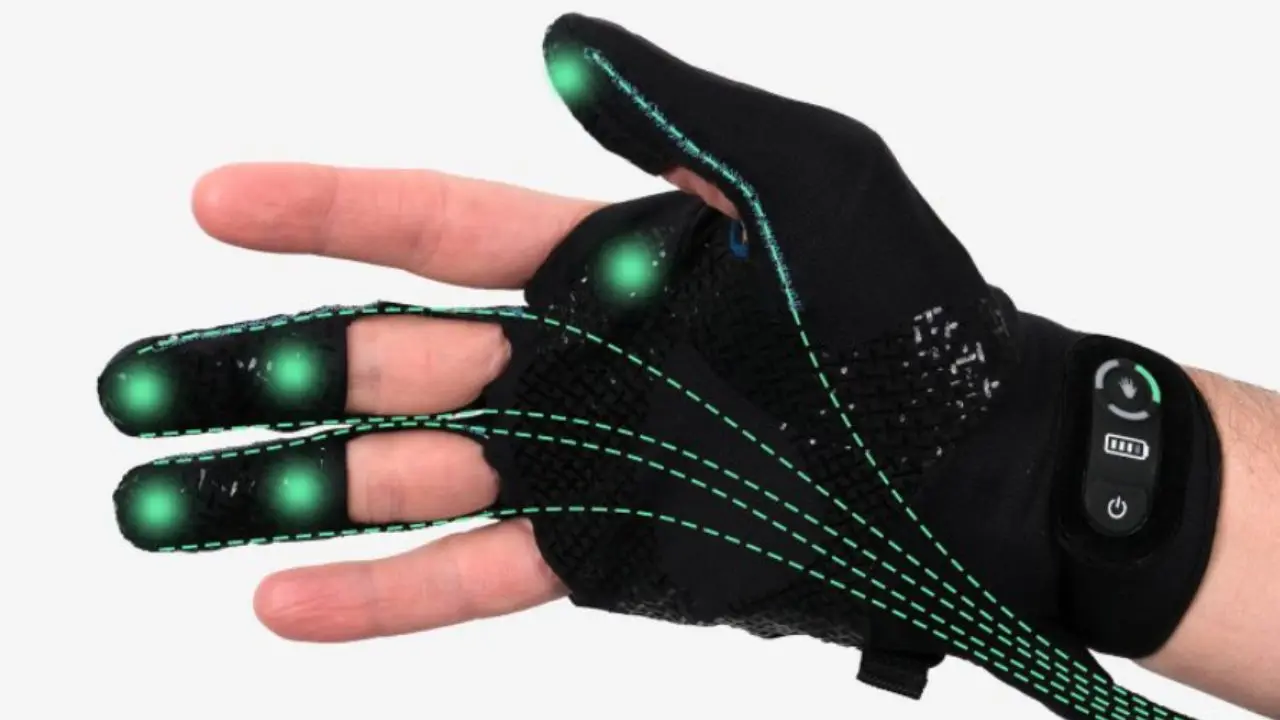
 Technology1 week ago
Technology1 week agoBreakthrough robo-glove gives you superhuman grip
-

 Politics1 week ago
Politics1 week agoClinton lauds Biden as modern-day George Washington and president who 'healed our sick' in DNC speech
-

 Politics1 week ago
Politics1 week ago2024 showdown: What happens next in the Kamala Harris-Donald Trump face-off
-

 News1 week ago
News1 week agoWho Are Kamala Harris’s 1.5 Million New Donors?
-
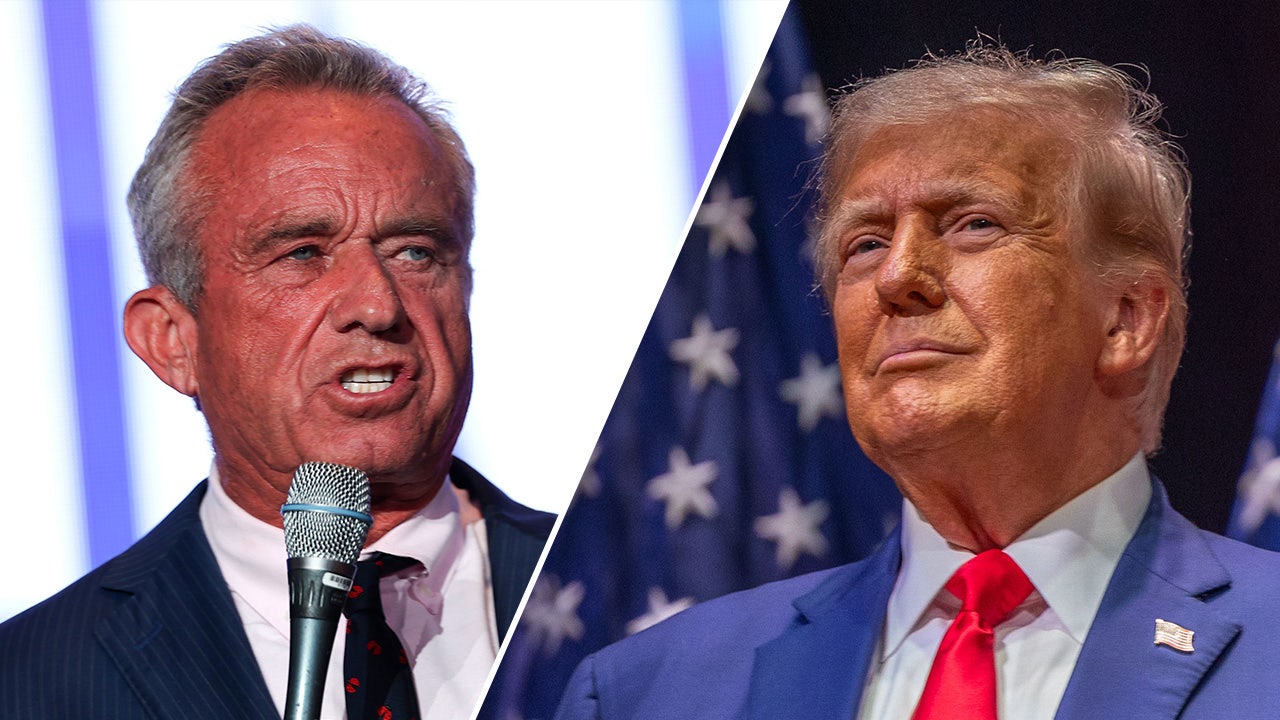
 Politics1 week ago
Politics1 week agoTrump taunted over speculated RFK Jr endorsement: 'Weird as hell'
-
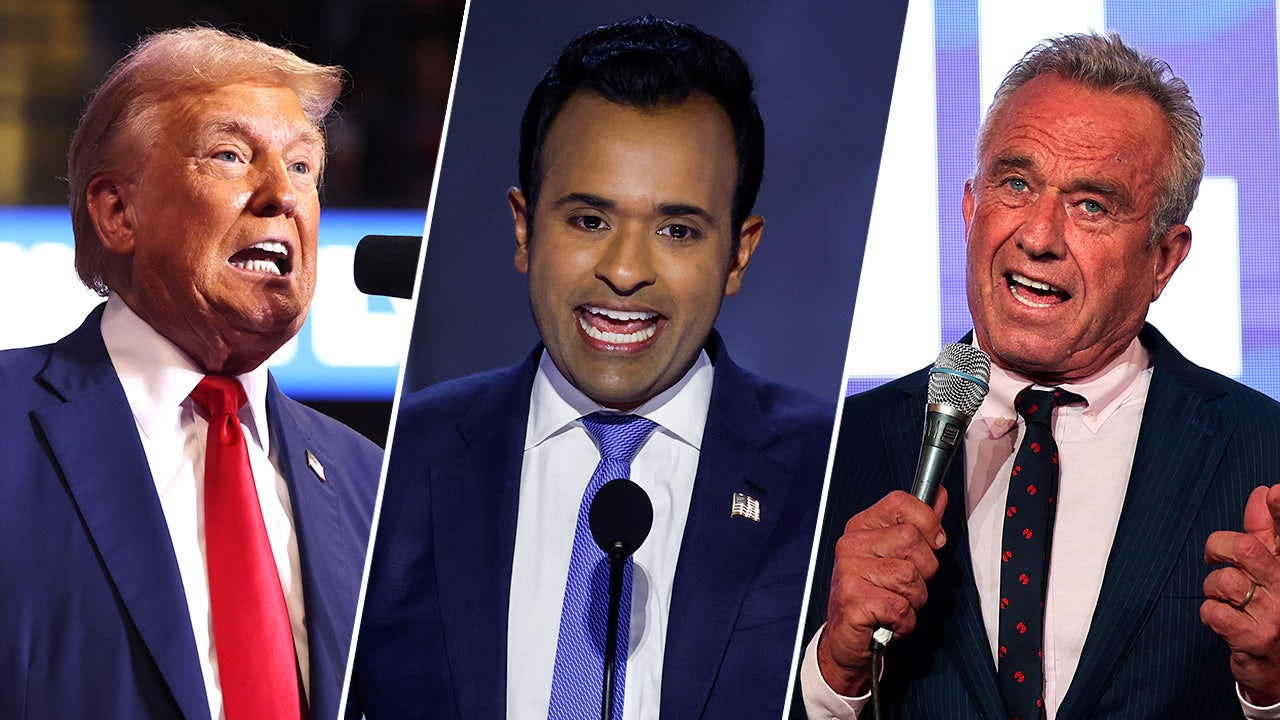
 Politics1 week ago
Politics1 week agoVivek Ramaswamy sounds off on potential RFK Jr. role in a Trump administration
-

 World6 days ago
World6 days agoPortugal coast hit by 5.3 magnitude earthquake
:format(webp)/cdn.vox-cdn.com/uploads/chorus_asset/file/24805763/DSCF2225.jpg)
:format(webp)/cdn.vox-cdn.com/uploads/chorus_asset/file/24805763/DSCF2225.jpg)
:format(webp)/cdn.vox-cdn.com/uploads/chorus_asset/file/25406199/DSCF6920.jpg)
:format(webp)/cdn.vox-cdn.com/uploads/chorus_asset/file/25406199/DSCF6920.jpg)
:format(webp)/cdn.vox-cdn.com/uploads/chorus_asset/file/25479541/Bose_QuietComfort_Ultra_Wireless_Noise_Cancelling_Earbuds_Press_Image_3.jpg)
:format(webp)/cdn.vox-cdn.com/uploads/chorus_asset/file/25479541/Bose_QuietComfort_Ultra_Wireless_Noise_Cancelling_Earbuds_Press_Image_3.jpg)
:format(webp)/cdn.vox-cdn.com/uploads/chorus_asset/file/24043027/DSCF9466.jpg)
:format(webp)/cdn.vox-cdn.com/uploads/chorus_asset/file/24043027/DSCF9466.jpg)
:format(webp)/cdn.vox-cdn.com/uploads/chorus_asset/file/23956619/DSCF8708_2.jpg)
:format(webp)/cdn.vox-cdn.com/uploads/chorus_asset/file/23956619/DSCF8708_2.jpg)
:format(webp)/cdn.vox-cdn.com/uploads/chorus_asset/file/23932539/pbp.jpg)
:format(webp)/cdn.vox-cdn.com/uploads/chorus_asset/file/23932539/pbp.jpg)
:format(webp)/cdn.vox-cdn.com/uploads/chorus_asset/file/24662267/DSCF0760_2.jpg)
:format(webp)/cdn.vox-cdn.com/uploads/chorus_asset/file/24662267/DSCF0760_2.jpg)
:format(webp)/cdn.vox-cdn.com/uploads/chorus_asset/file/25311366/DSC_0454_2.jpg)
:format(webp)/cdn.vox-cdn.com/uploads/chorus_asset/file/25311366/DSC_0454_2.jpg)
:format(webp)/cdn.vox-cdn.com/uploads/chorus_asset/file/22983861/airpods3.jpeg)
:format(webp)/cdn.vox-cdn.com/uploads/chorus_asset/file/22983861/airpods3.jpeg)
:format(webp)/cdn.vox-cdn.com/uploads/chorus_asset/file/23400347/lb.jpeg)
:format(webp)/cdn.vox-cdn.com/uploads/chorus_asset/file/23400347/lb.jpeg)

